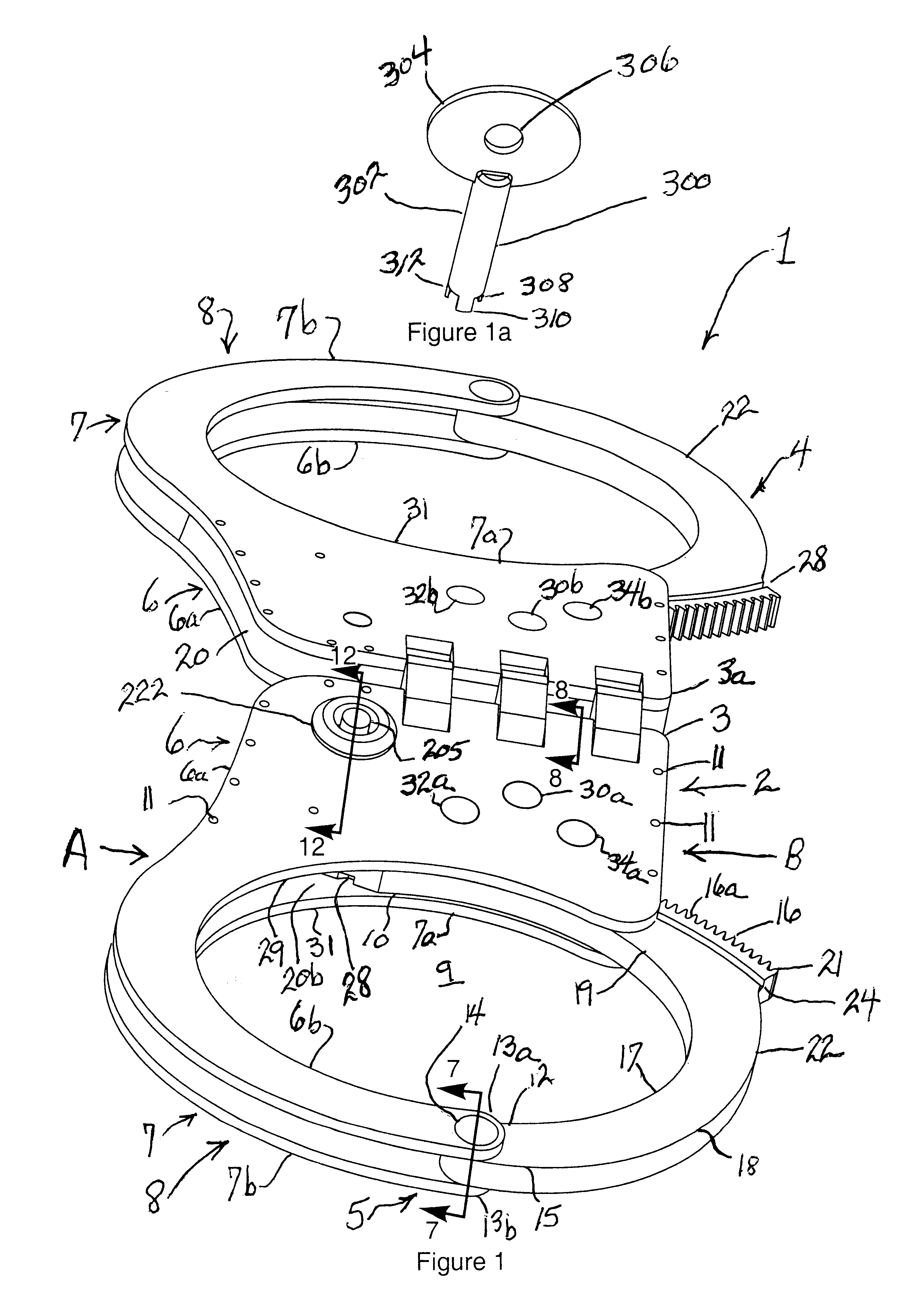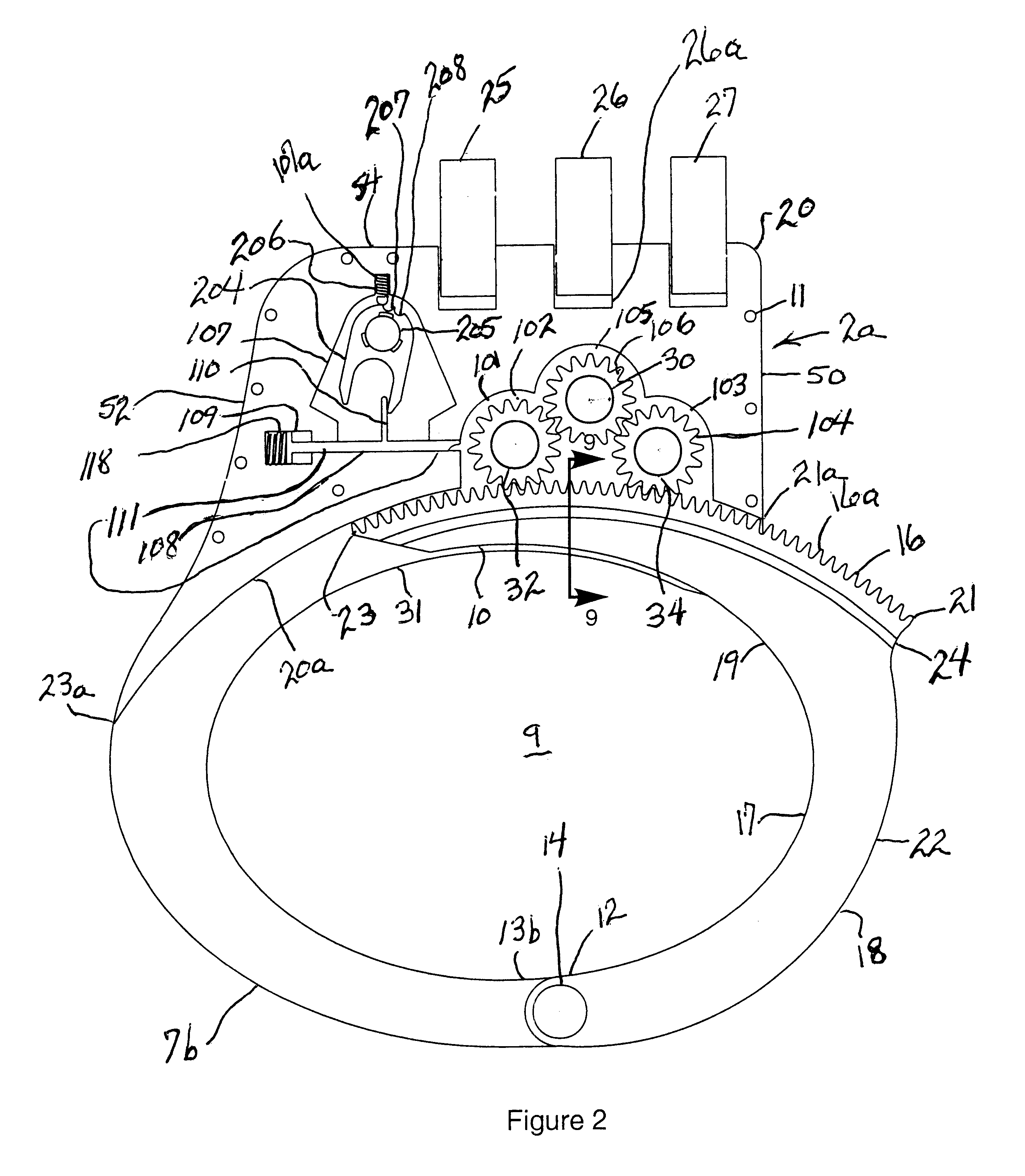Operating and locking mechanisms for handcuffs
a technology of operating mechanism and locking mechanism, which is applied in the direction of handcuffs, constructions, building locks, etc., can solve the problems of mechanism not being secure and utterly defeating the purpose of handcuffs
- Summary
- Abstract
- Description
- Claims
- Application Information
AI Technical Summary
Benefits of technology
Problems solved by technology
Method used
Image
Examples
Embodiment Construction
Referring now to the Figures, and particularly to FIGS. 1-4, there is shown a set of handcuffs 1 broadly comprised of first handcuff 2 and second handcuff 4 positioned end-to-end and flexibly connected together. In this regard, proximal end 3 of handcuff 2 is spaced apart from and flexibly connected to proximal end 3a of handcuff 4 by coupling links 25, 26 and 27. Handcuff 2 and handcuff 4 can be identical in construction and operation and are shown as such in FIG. 1, accordingly, the following description of handcuff 2 is fully applicable to handcuff 4. Therefor, only handcuff 2 is described in detail. Reference is made to handcuff 4, or any of its elements, only if clarification is believed to be served by such reference.
Handcuff 2 is an apparatus comprised of the combination of planar top plate 6, which is aligned with and parallel to, planar bottom plate and 7, housing block 20, containing the operating and locking mechanisms of this invention, and curvilinear swing arm 22. Plat...
PUM
 Login to View More
Login to View More Abstract
Description
Claims
Application Information
 Login to View More
Login to View More - R&D
- Intellectual Property
- Life Sciences
- Materials
- Tech Scout
- Unparalleled Data Quality
- Higher Quality Content
- 60% Fewer Hallucinations
Browse by: Latest US Patents, China's latest patents, Technical Efficacy Thesaurus, Application Domain, Technology Topic, Popular Technical Reports.
© 2025 PatSnap. All rights reserved.Legal|Privacy policy|Modern Slavery Act Transparency Statement|Sitemap|About US| Contact US: help@patsnap.com



